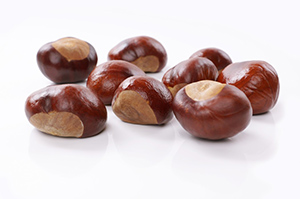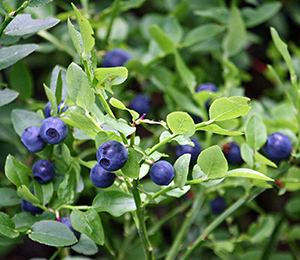Table of Contents
Herbs for varicose veins: The veins carry blood to the heart after passing through capillaries and nourished oxygenated tissues. The blood passes through the veins with almost no pressure, thus making the return of blood from the legs especially difficult, as it has to rise against gravity.
- Varicose Vein Support – Provides support for healthy varicose veins and controls poor pressure for those in sedentary work or home offices.
- Encourages Blood Flow – We must strengthen our vein walls, for they can be weakened by excessive straining from sitting, stress, constipation or diarrhea.
Herbs for varicose veins contain venotonic substances, which promote blood flow, avoiding dilation and the formation of varicose veins. Venotonic herbs are also helpful for hemorrhoids and dilated veins in the anal area. Compresses soaked in a decoction of certain venotonic and cicatrizant plants are an exciting addition to treating varicose ulcers of the legs.

Varicose Veins
This condition is caused by permanent dilation of the veins. The following herbs all have venotonic action; that is to say, they strengthen the walls of the veins, avoiding excessive dilation. Venotonic plants also act by promoting the return of blood inside the veins. Some plants also have capillary protecting properties, thus regenerating and strengthening the cells that form the tiny vessels or capillaries. The blood flows to the tissues. This way, the edema in tissues diminishes, improving blood circulation.
Phlebitis
This condition is an inflammation of the veins, which usually occurs in varicose veins, previously dilated veins. In addition to the recommended plants for varicose veins, phytotherapeutic treatment of phlebitis requires the local application of compresses or poultices of these herbs to the area affected by phlebitis.
Best Herbs for Varicose Veins
- BLOOD FLOW SUPPLEMENT FOR MEN & WOMEN – A smart choice for men or women our blood flow supplements supports healthy nitric oxide production. Healthy nitric oxide levels has been tied to supporting muscle cramps, fatigue, or varicose or spider veins.
Top Herbs with Capillary Protecting Action
These herbs strengthen and regenerate the cells that form the tiny vessels or capillaries through which the blood flows to the tissues. The most important active components responsible for this action are rhutine vitamin P and anthocyanins. They are applied for bleeding caused by vessel fragility, edema, varicose veins, and phlebitis. By strengthening the cells that form the capillaries, these plants decrease the fluid flow from the capillaries to the tissues, thus reducing edema and improving blood circulation.
Varicose Ulceration
This condition is a loss of skin integrity, making it difficult to heal, and is caused by an alteration in blood circulation. It is usually related to varicose veins and phlebitis and is located near the ankle in the lower part of the legs.
The phytotherapeutic treatment of varicose ulceration consists of ingesting venotonic herbs and capillary-protecting plants, applying poultices and compresses on the affected area, and cicatrizant antiseptic and astringent plants.

The horse chestnut is a beautiful tree whose bark and seeds contain a glycoside called esculin, a substance that has a powerful venotonic and capillary protecting action. A decoction of its bark and leaves is taken orally (respecting the dosage) and applied in compresses on the legs, achieving notable results in tired legs or edema caused by varicose veins or venous insufficiency of the lower extremities. It is also applied in sitz baths in the case of hemorrhoids. The horse chestnut esculin is part of many pharmaceutical preparations that contain venotonic and anti-edema action.

The bilberry fruits are rich in anthocyanins, which dye the skin a bluish color. When taken orally, anthocyanins reinforce capillary and vein walls and improve blood circulation to the retina and the lower extremities. Bilberry juice is a good remedy for varicose veins.
Venotonic herbs and ascending massages in the lower extremities promote blood circulation and improve the appearance of the legs.
Frequently Asked Question
Which herbs have the most substantial evidence for helping with varicose veins?
– Horse Chestnut Extract (Aesculus hippocastanum): Aescin helps reduce inflammation and vein leakage. Several studies support its benefits for chronic venous insufficiency (CVI), which underlies varicose veins.
– Butcher’s Broom (Ruscus aculeatus): This herb is often combined with other vein-supporting herbs. Some research suggests it may reduce swelling and discomfort.
Can herbs cure my varicose veins or help with symptoms?
Herbs for varicose veins primarily address the symptoms of CVI (swelling, pain, heaviness) rather than eliminate the underlying issue of damaged valves within the veins. More severe cases may still require medical interventions.
Are there any herbs I should avoid using for varicose veins?
See your doctor before using herbs for varicose veins, especially if you take medication or have existing conditions. Some herbs can interact with medications like blood thinners or diuretics.
How do I choose high-quality herbs for varicose veins?
Look for standardized extracts, meaning they contain a guaranteed level of the active ingredient.
Purchase from reputable brands that adhere to good manufacturing practices (GMP).
Speak with your doctor or a qualified herbalist for product recommendations.
How long does it take for herbal remedies to work for varicose veins?
Herbs don’t provide an overnight fix. You may notice improvement in symptoms within a few weeks. Still, consistent use over several months is often needed for significant benefits.
Can I use herbal creams topically for varicose veins?
Topical creams containing herbs like horse chestnut extract, gotu kola, or calendula might relieve localized discomfort. However, they are less likely to address the underlying vein weakness.
Where can I find reliable research on herbs for varicose veins?
– PubMed: A database of biomedical research: https://pubmed.ncbi.nlm.nih.gov/
– National Center for Complementary & Integrative Health (NCCIH): https://www.nccih.nih.gov/
Websites of reputable herbal medicine organizations or universities
Are there any natural alternatives or complementary therapies to herbs for varicose veins?
Yes! Lifestyle changes are crucial:
– Elevating your legs
– Regular exercise
– Compression stockings
– Maintaining a healthy weight
Are herbs for varicose veins safe during pregnancy or breastfeeding?
There is limited research on the safety of many herbs during pregnancy and breastfeeding. Always consult your obstetrician or lactation consultant before using any herbs if pregnant or breastfeeding.
Can herbs replace my doctor’s treatment for my varicose veins?
No. It’s essential to discuss all prospective treatment options with your doctor. Herbs for varicose veins might offer complementary support alongside conventional treatments. Still, they should not be considered a substitute for necessary medical care.
DISCLAIMER: All content on this website is presented solely for educational and informational objectives. Do not rely on the information provided as a replacement for advice, diagnosis, or treatment from a qualified medical expert. If you are pregnant, nursing, or have any preexisting medical concerns, talk to your doctor before using any herbal or natural medicines.
REFERENCES
- George D. Pamplona-Roger, M.D. “Encyclopedia of Medicinal Plants.” George D. Pamplona-Roger, M.D. Encyclopedia of Medicinal Plants. Ed. Francesc X. Gelabert. Vols. 1 San Fernando de Henares: Editorial Safeliz, 2000. 248, 249, 250. Print. [herbs for varicose veins]
- National Center for Complementary & Integrative Health: https://www.nccih.nih.gov/health/horse-chestnut
Last update on 2024-07-21 / Affiliate links / Images from Amazon Product Advertising API







